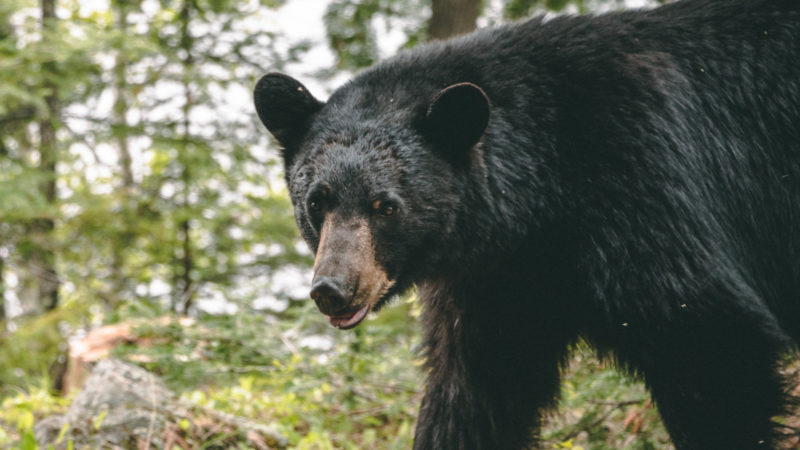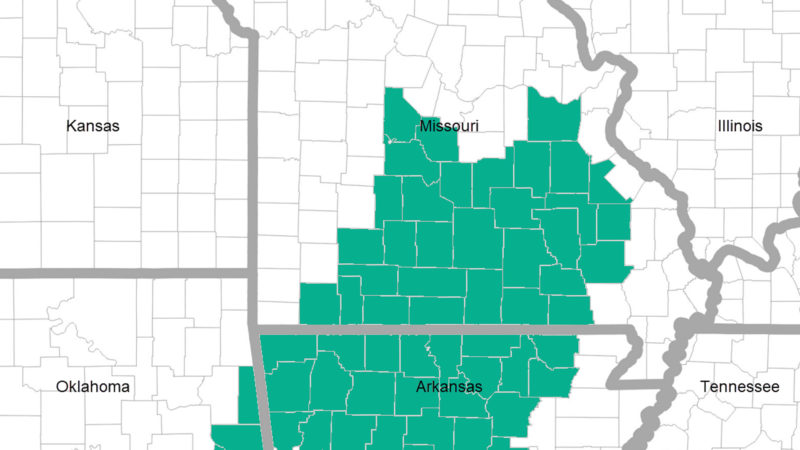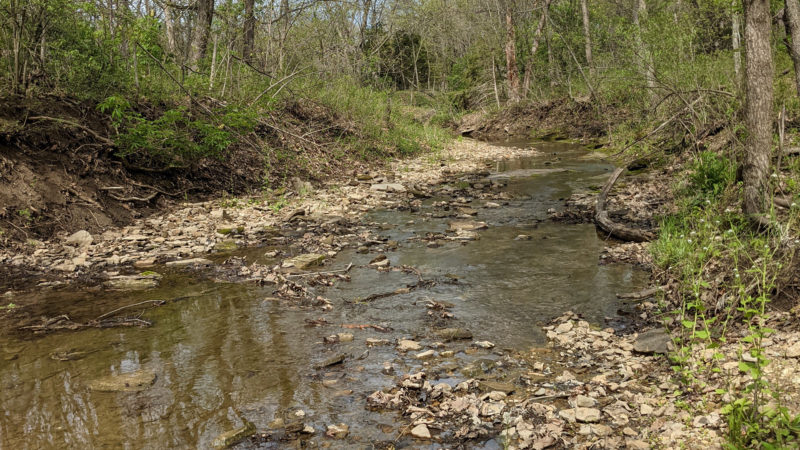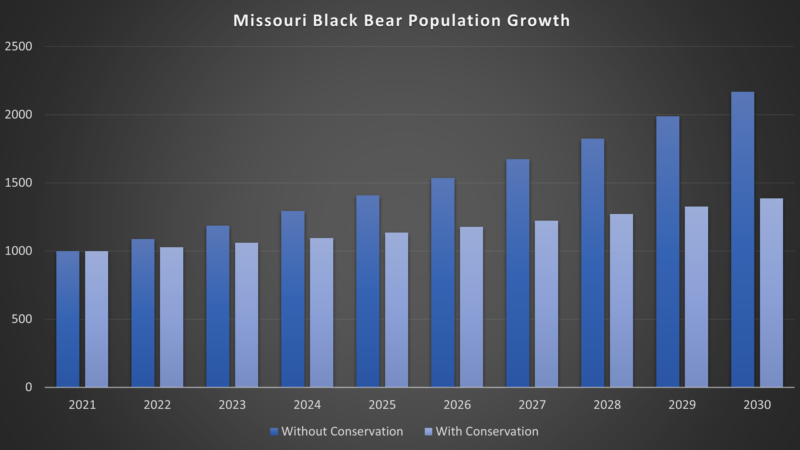After a decades-long management program, black bear hunting returns to the Show-Me State this fall. The Missouri Department of Conservation (MDC) approved a limited season in October of 2021. Truth be told, it’s a great story. Missouri’s black bear population was practically extirpated in the early 1900s. Some indicate that “practically” isn’t going far enough, claiming extirpation had occurred and no local black bears remained. Fortunately, after Arkansas’ extensive 1958 reintroduction effort, buoyed by MDC’s more recent Black Bear Project, Missouri’s black bear population is now approaching 1,000.

This is excellent news, but we should understand that the MDC is just dipping its proverbial toe in the black bear hunt waters. The season is relatively short, and permits are limited. Plus, they restricted this year’s black bear season to residents only. So, unless you call MO home, you won’t get the chance to pursue a Missouri Ozark brute. On the other hand, this does bode well for the future of black bears and black bear hunting. Ultimately, whether you’re happy about the new hunting season or not, the fact that black bears are actively reclaiming some of their original range is positive news.
History
Once home to an abundance of black bears, Missouri went almost a century without a stable population. In fact, some time in the mid-1900s, unregulated hunting and extensive habitat damage reduced the population to near zero. It wasn’t until a friendly neighbor, Arkansas, decided to kick off a reintroduction effort that the black bear’s quantifiable return to Missouri was even possible. Throughout the ’50s and ’60s, Arkansas imported more than 250 black bears to their landscape.
As the Arkansas population grew, sightings in Missouri started to climb. It was slow at first, and bears remained sparse in the Show-Me state for much of the 20th century. The MDC recorded only a handful of black bear sightings between 1950 and 1972, rising to a measly 55 in 1990. Fortunately, Father Time and Mother Nature teamed up, and by 2019, Missouri estimated a minimum of 540 to a maximum of 840 black bears called Missouri home.

Season Specifics
After an extensive conservation program that included collaring and monitoring hundreds of black bears, Missouri felt the current black bear population was healthy enough to offer hunting opportunities. A limited number of Missourians will get a chance to harvest one of North America’s largest predators.
Below are highlights of the 2021 Missouri Black Bear limited season:
- Season dates are 10/18/2021 through 10/27/2021
- Harvest quota limited to 400 black bears across 3 zones
- Quota progress is monitored daily, allowing MDC to close the season early if quotas are met
- Centerfire rifles, handguns, shotguns, muzzleloaders, and bows are allowed
- Lights, night vision, dogs, or baiting are NOT allowed
- Pursuing black bears while they are in a stream or body of water is NOT allowed
*This is a non-exhaustive list. For a complete list of MDC’s Black Bear hunting regulations, visit their site – https://mdc.mo.gov/

Public Opinion
Not everyone agrees with Missouri’s new hunting season. Animal activists and anthropomorphism aside, some Missouri residents think it might be too early for a black bear season. They point to relatively low population figures and the fact that reintroduction is just now taking hold. Jumping the gun with a hunting season might impede the overall reintroduction effort.
Assuming the 2019 black bear population estimates are accurate, and accounting for the observed 9% population growth rate, an approximate maximum of 1,000 black bears call Missouri home in 2021. The permit quota for Missouri’s black bear season is 400, spread across three zones. At first blush, this doesn’t look good. It doesn’t take a mathematician to see that harvesting 400 black bears from a total population of 1,000 isn’t sustainable.

The truth is, the MDC doesn’t expect 400 hunters to successfully harvest a black bear. According to their website, they expect 10-20% of hunters to successfully harvest a black bear. This might be due in part to the added restrictions they placed on the season. Considering that hunting a black bear is challenging in its own right, the additional regulations definitely push the difficulty scale askew. So, let’s meet in the middle and estimate that 15% of hunters will succeed in harvesting a black bear. Meaning, they expect about 60 black bear harvests in 2021. If that holds true, and the 9% growth rate remains constant, the black bear population will theoretically increase into 2022. Looking further down the road, if quota limits remain unchanged, the overall black bear population could increase nearly 40% by 2030.
Conclusion
At the end of the day, this is great news for hunters and conservationists alike. Wildlife habitat is at a premium. Decades of misuse have burdened our once flourishing diversity. Few native animals roam the same ranges they once did, and black bears are no exception. Missouri’s successful return to black bear hunting is another sign that we’re fixing some of the mess we made.
Contrary to some thinking, hunting is a necessary conservation tool. It’s not that Missouri’s black bear population is to the point where hunting them is possible, but instead, hunters are being called upon to help. Hunting drives wildlife agency revenue, which leads to more and better-funded conservation programs, ultimately improving the health and habitat of all wildlife. We’ve got a long way to go, but let’s celebrate this small victory.

 By
By 



